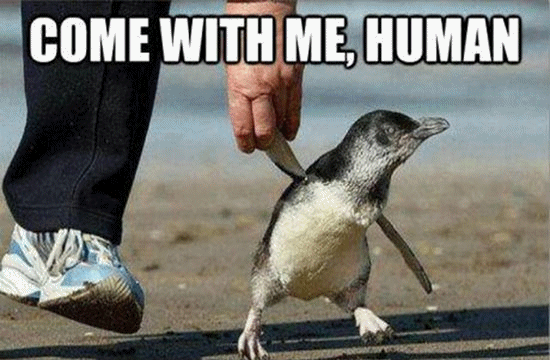Anything can change the
context for anything else, and lend it new
meaning.
Therefore anything gives
meaning
to anything else. And conversely, so does
any absence thereof. Hence, indeed, it is trivially true, that
death
gives
meaning to life. So the eradication of
death will profoundly change whatever
meaning that
we each assign to living. The implication remains that only
death
gives
meaning to life. And this can only be true if life in and of
itself, is inherently
meaningless
and futile. And this is
Nihilism. It is also trivially true, because there is no inherent
meaning
because
meaning is
constructed, assigned by individuals and shared in societies.
Nihilism, after all, is less an
Ontology than a
depressive strategy of
terror management,
a malaise of
Existential
despair in consequence of mortality that will be much relieved by the
eradication of death, obviously something to celebrate.
- Bio-Luddite oppression: Alas that Deathists are not always content simply to go quietly into
that dark night
|
As Eliezer Yudkowsky
concludes upon
death and
character
building “Only things unvirtuous
of themselves, must be excused by
philosophizing them
into excuses for virtue.”
Indeed, no inspiration is ever truly
intrinsic to the source, but to the individual. And should it ever really be
the case, anyone embracing
death
acceptance, indeed who actually needs death in order to appreciate life, may
indeed find themselves that much more prone even to passive self harm, and
would be far better off to discover any other, better, saner, generally
safer
Existential
adaptation.
For ostensibly spiritual longing, indeed the
appreciation of
death, is often actually predicated upon the extol of
virtue
and sacrifice under adversity that amounts to an
admiration of
drama
ever heightened by raising the stakes, which mortality indeed accomplishes
to the utmost.
But all of this is entirely forgetful
that what makes for good
drama
in fiction are what would be in
reality adverse
circumstance and suffering. Bad decisions make good stories, and martyrdom
is not to be sought for.
After all, it is the same issue of
mortality that has always fueled the no less
dramatic
questing for immortality. And the
attainment of true practical super longevity and the conquest of
death, is
hope for a happy ending, the outcome in doubt being necessary in
Technique
of
Suspense
plotting.
-
“[Ray Bradbury] opposed vast extension of the
human life span not because it would result in stagnation, or social
injustice, but rather because it would lead to the diminution or termination
of those elements of human suffering and weakness he considered essential to
being human. Without
death, and forgetting and constantly being “reset” to
that fraction of our libraries each human generation might be able to absorb
before, in turn, being extinguished, there could be no
pathos of
the kind that was Bradbury’s stock and trade. Bradbury saw, quite clearly,
that practical biological immortality would transform man into something
fundamentally different, alien even, from his current state of being and he
was deeply repulsed by that. To be human is to be mortal and to suffer and
to
die and to live out a history of error and folly over and over,
indefinitely. A history that would recede into the dim mists of living
memory. A history that required the storyteller to shape the critical
parables for mankind to live (and
die) by. A history that required men like
Ray Bradbury. His final remark in our conversation was that he would have
immortality through his books which was the only kind of immortality to
which men were entitled.”
-
But the emortal
person, however
growing in
Philosophical
sagacity, nevertheless must remain fallible. And the same story tellers are
ever reshaping their parables anew for the same people in different times
and life passages, never mind only to successive forgetful generations. The
Transhuman will only present fresh new demand for culture throughout the
long road ahead before any true dawning of the Post Human. And even the Post
Human, however advanced, strange and unrecognizable, will be shaped by
evolution of whatever their own unprecedented and hither to alien
motivation
and necessity.
The very notion of
deliberate preservation and institution of
death, even after
death can be
eradicated, all simply as a cynical strategy of artificial scarcity in order
to prevent inflation of the
value of plentiful life, seems an amazingly
farfetched, fraudulent and misanthropic sham ever with intent to imagine
much less ever to to perpetrate. -to paraphrase John Updike, life
a shabby subterfuge indeed! And such fantasy will never happen.
The masses will not continue to submit to death on schedule just for
the sake of status quo, when offered perpetual youth. Nor will
insurance providers remain willing to continue footing the bill for
geriatric decline and suffering when better will be cheaper.
In the final analysis, not all
pathos
is equally marketable: Resignation by preference, is
neither heroic nor
dramatic
but merely Post Modern and depressing. Senseless vicissitude is mere
melodrama. Practical immortality will open new chapters in human
adventure. The future is not doomed to indolence. Even with the elimination
of adversities of privation, fresh
drama
awaits in the striving towards new
challenges. What is better? The mortality, the eventual extinction, of
humanity ourselves, by even willful failure to adapt? Can the prospect of
Emortality truly remain such insurmountable
opportunity? Or as might pronounce The Bard, might it remain nobler
in the mind to take up arms and overcome the
outrage of mortality, in
the parlance of William James: “the worm at
the core” of the human condition?
Why should we die? It's not like we need to! The taming fire,
species defining
innovation
at the dawn of humanity, is now taken for granted as quaint and
rustic retreat and return to nature. Likewise carpentry regarded by
Confucius as such dangerous
innovation,
is now so often embraced as an exercise in nostalgia in rejection of
modern technology. Sooner than we think, surely
Emortality will come as naturally in seeming
to the
Emortals that we shall become, as
death,
mortal terror and despair ever has to mere
mortals such as ourselves here an now. Why then are Deathists
convinced otherwise, that
Emortality will be fate worse than
death? And why do they
think themselves so profound? Why would Deathists rather surrender
life than let go of such moribund defeatist
fiction as suicidal
terror management
strategies of Deathism? Perhaps Deathism is like junk food,
unhealthy but ever within reach, failure to plan and planning to
fail. And so, how much closer must rescue come before they will ever
dare reach out? Answer: The Deathists, as do we all but more
secretly and shamefully, crave
Emortality served up on the proverbial silver
platter.
In the end, it will be history and the changing needs of the author's
public, that brings the
values
of
Literature
into synthesis with those of
Science Fiction.
And can any of that truly become so boring and
irrelevant
for capable and incisive creative writers and commentators? -
that, perish the thought! they might some day confront an audience at
all the less naive and therefore the more worthy of the author's
respect?
How insufferably patronizing!
-
And here I thought that trashing hubby's comix collection was belligerent!
-
-
-
- Is Reactionary Deathism after all, truly so fearful of
eternal stagnation as they so often pretend,
- or indeed rather, of
ongoing
reflection
and progress?
And which of these possible outcomes, stagnation or
reflection,
should truly be
anticipated of
Emortality and longer life?
-
“If man were immortal he could be
perfectly sure of seeing the day when everything in which he had
trusted
should betray his
trust,
and, in short, of coming eventually to hopeless misery. He would break
down, at last, as every good fortune, as every dynasty, as every
civilization does. In place of this we have
death.”
— Charles Sanders Peirce
-
But stagnation is not a factor of time alone, of long life, but rather of
various circumstances that can be addressed in order to sustain even intense
engagement of
meaningful
breadth and depth of individual human
character
growth,
learning,
autonomy and progress,
not to mention just havin'
fun, so that
death
remains the most
Absurdly
Draconian solution given any other viable options.
“Life is a process of becoming, a combination of states we have
to go through. Where people fail is that they wish to elect a state and
remain in it. This is a kind of death.” — Anaïs Nin
Indeed, jadedness ever for fresh
novelty, seems the best protection from future shock! Not everyone is in
such a rut, or at least not so completely and irrevocably. And not everyone
indeed in a rut, even knows it or suffers therefrom, certainly not
suicidally!
Indeed,
in the famous words of George Santayana: "Those who do not remember the
past are condemned to repeat it." And longevity is an effective
safeguard for progress against short memory, as attested by calamitous
historical repetition, generationally, with the loss of living memory and
lessons of the past learned only by the survivors. Must we nevertheless all
then abide by the suicide pact of the Bio-Luddites, regardless? Is not any
conceivably wider range of option the more desirable?
Upon the suicide of Robin
Williams, 'What Dreams May Come,' the fantasy
movie of such flagrant
denial
of the very
death
of Robin Williams, replete with visions of the
famous actor in Heaven, immediately soared in
renewed popularity. In the famous Isaac Asimov novel
'Bicentennial Man'
adapted into a
movie starring the late Robin Williams, a robot makes himself human and then
to complete the process, sheds his immortality, embracing natural
death
simply in order to win the approval and acceptance of humanity at large, all
just to fit in at long last. The irony is in how just such desperate
approval seeking is both so heteronymous
and robot like and thus all too human, not to
mention so calamitous and even fatal. Indeed, given how the masses revile even the
seekers of
Emortality, indeed how much more might they
resent it's achievement? And yet homicidal jealousy
will likely abate once
Emortality becomes available to all.
Bioludditry will then evaporate. Wouldn't that be a
plot
twist? 
In truth, the greater problem is nothing
so trifling or abstract as any purported specter of perpetually adolescent
ennui: It is suffering and tragedy that so builds and mounts in life to
crush the spirit so. The bane of mythical immortals has always been ever
renewed bereavement outliving their loved ones again and again. But not if
only they are permitted to share their gift! And that exactly is what the
future holds for those who will only live to see it. Generations to come
will never experience the loss of bereavement. That is the only feasible
realization of the yearned for mythic return to innocence for humankind, and
without deception and oppression in heteronymously
stupefied preservation of naivety. The elimination of bereavement will
redefine the very human condition even no less than individual practical
immortality in and of itself.
The palpable
Morality
Play
of ThunderCats 2011 Episode 4 - ‘Song of the Petalars,’ an
entertaining rendition of the romanticized
thematic
trope of ephemeral life, remains no less elusive to many who miss the true
point of how Lion-O, the young and brashly impressionable Lord of the Thundercats, enchanted and beguiled by the earnestly optimistic fatalism of
the Petalar Emerick, then very nearly leads his comrades into a desperate,
grand and hopeless last stand against their enemies; all but for the
deus ex machina that they are conveniently rescued in the very precious nick
of time, by the older, wiser and far more experienced Panthro, with all the
preparedness a real survivor, embracing technological novelty and making his
grand entrance in the Thundertank, thus routing the enemy.
For
even howsoever valid priority of quality over quantity or duration, how well one has lived rather than merely how long, exactly
as so beatifically extolled by the quickly wilting Petalar, Emrick, may often tend to be anything of a false
dilemma somewhat arbitrarily ruling out both at once.
Indeed, Sturgeon's Law states that:
"90%
of everything is shit." Therefore, quality is often a function, first of
all, of quantity from which to choose, the wheat sifted from the chafe. By
trial and error, quality must often be ferreted out out from sheer quantity,
which takes more time. For sagacity accrues from experience, not naivety.
Indeed, as Kathy muses in ‘Never Let Me Go’ (2010) from the novel by
Kazuo Ishiguro: “Maybe none of us really understand what we've lived
through, or feel we've had enough time.”
And yet, there endures the distorted
romantic nostalgia for the adventuresome life quick, merry and bold. Indeed,
Parkinson's Law which states that the work expands to fill the time
allotted, has actually been speciously advanced to contend, without
supporting evidence, that longer life and health only accrues further
procrastination instead of greater productivity. Need that be dignified with
response? There is even the implicit misanthropic
Moralim to the effect
that mounting decrepitude is constructive as a necessary
punishment for the
callow false invulnerability of youth! This of course devalues experience in
its own right. Lastly, there is the canard of immortality and ennui, even
doctrine to the effect that life and worldliness is intrinsically dull
eventually necessitating drastic escape.
Why, just imagine all the people:
Historically, the entertainments of affluent culture was actually invented
in order to stave off the boredom of
peace and plenty sans the adaptive
stimulation from violence, suffering and
the struggle for survival. Imagine, then, if per chance practical
immortality will similarly spur human culture by producing the effect of
raising the stakes and therefore sharpening the focused priority of ongoing
fulfillment
and richer true to life
drama of greater and better
free
choice
and
autonomy
in order to nurture, sustain and intensify experience of
meaningful breadth and depth of individual human
character
growth and progress, moment by
moment even indefinitely into the vastness of the looming future, an
immortal ocean of time with no far shore, into at long last replacing the
long standing passive reliance upon the Deathist
melodramatically
decidophoic coward's way out, then
all the world will be as one, in the same proverbial boat, stewing in the
lonely
boredom of
underserved needs and desires from frustrated intrinsic
motivation.
“Millions long for immortality
who don’t know what to do with themselves on a rainy Sunday afternoon.”
—
Susan Ertz
“Unless a man has been taught
what to do with success after getting it, the
achievement of it must inevitably leave him a prey to
boredom.”
—
Bertrand Russell
Imagine an unprecedented
new era ensuing, not only of comfort and affluence, but of expanding human
fulfillment.
So can the playing out of so plainly happier a
futuring
scenario truly be what anyone is so
desperate to avoid? In a word:
yes. Indeed, what could be more dreadful from the vantage point of
anti-intellectualism? Because, it is children of any age, who get set in
their ways. In time enough, they must set childish things behind them. And
if neither simple Hedonism nor blithe complacency cannot sustain perpetual
superficiality, then Radical Life Extension will eradicate "An unexamined life once and for all!
“The soul is born old but grows young. That is the comedy of
life. And the body is born young and grows old. That is life's
tragedy.” — Oscar Wild
For stagnation is not
inevitable, ultimately only
reflection, the
waning of innocence and
growth
into sagacity. Only change itself remains constant. Whether for people or
for societies, time is the cure for stagnation. Only annihilation forestalls
further change. Under any circumstances, mass ennui may be among the most
fruitful
motivating
challenges ever to confront humanity throughout history, and well into the
foreseeable future.
Competition within the species first
drove evolution of engorged human cerebrality well beyond the needs of
environmental adaptation, resulting in the
motivating
intrinsic
human
stimulus
needs and thence struggle with
boredom.
That was the first loss of innocence, mourned as the mythic fall from grace
and celebrated as the mythic theft of fire. Again, what Deathism as any
other decidophobic manifestation of
heteronomy
so fears, is nothing less than the
Existential
burden of freedom.
Deathism extolling definition in human mortality, is simply Agoraphobia
along the axis of time.
•
In defense of the
Hedonic
treadmill How
raised expectations promote the will to continue living
Debunking the
hereafter, still
“Mystical
explanations are considered profound. The truth is that they
are not even superficial.” — Friedrich Nietzsche
“It is natural to believe in God when you're alone-- quite alone, in
the night, thinking about
death.” ― Aldous Huxley, Brave
New World
Never the less, they remain enshrined
in taboo:
Screenwriter Edmund H. North's
script for the movie ['The Day the Earth Stood Still'] (itself an
adaptation of a 1940 Harry Bates' short story titled "Farewell to the
Master") originally called for Klaatu to simply be resuscitated from
several hours of clinical death, and thereafter to go about his
functionally immortal business. Unfortunately, the Breen
Censorship Board (an autocratic self-censorship mechanism of the movie
industry especially active during the cold war years) was scandalized at
the idea of Gort bringing Klaatu to life, saying "Only God can do that!"
North's protestation that the movie was
science fiction and that the
action in question involved genuinely unearthly alien technologies, got
nowhere.
- Eventually, a compromise was
worked out: Klaatu's invocation of deity and his promise not to
live forever were inserted, and the Breen Board, apparently satisfied
that it had protected the public from the un-American idea of scientific
immortality, withdrew its ban. The
scene
remains as a jarring
monument to the inability of many people to consider (even in fiction)
the idea of dealing with death on any but supernatural terms
—
'The Day the Earth Stood Still
Cryonics and the Resurrection of the Mythic Hero'
by Steven B. Harris
If wings, robes and halos, strumming upon the lyre whist
reclining upon cotton candy clouds, seems in our day,
cartoonishly preposterous, and countless inter-dimensional realms of
reincarnation
likewise ever more far fetched, then with a quick and
superficial update in stage
dressing,
there is still no end of comforting
Fairy
Tale
supposition,
pandering
unscientific sophistry to tickle the ears, and special effects
to wow the eyes, of Hollywood mass marketed
Mystical
experience; ever the same trope and cliché no less
Epistemologically and
Methodologically
abusive of doctrinal faith undermining any
value
in genuine attitudinal faith.
Is the very
observation, how tyranny is so pervasive, really
very much of an argument to oppose or
invalidate democracy? -or just cynical, even misanthropic?
Then why is similar even greater non sequitur
of Deathism, such silly travesty of genuine
Philosophy,
even taken so seriously? To begin with, the trite
observation of
movement in cycles, the transitory nature of all phenomena, that
death is natural, is narrow-minded popular platitude du jour of
sour grapes and
kneejerk of making graceful
virtue of
necessity,
as if everything natural is therefore good or fixed and
unchangeable, or that the long and leisurely geological cycles
and the quick life in a day of a mayfly, are all much the same
in consequence and personal desirability for parameters of
survival. Mortality, degenerative aging and even
death, is of course neither
good nor fixed, but conditioned upon no end of other factors and
therefore amenable to scientific investigation and technological
intervention, indeed as any other natural processes.
And by the further stretch of actually uninvited inference, such
appeal to nature,
death, as proclaimed as in the movie
‘The
Fountain’
(2006), is the gateway to awe. Such is the notion in
application of sympathetic magic,
that consciousness
expands together with the dissolution of the physical form into
the soil, the trees and the wind. A majestic notion indeed,
appealing to expansive and riveting sensations and altered
states of mind without sense of time, ever tantalizingly beyond
normal consciousness.
But such claims blatantly violate all common sense of the formal
stance, a central idea of modern science, that everything is
whatever it is, by integrity of its unique configuration or,
Socratically:
form. And that
consciousness
too, is an epiphenomena contingent upon constituent form and
function, neurologically.
Eastern
Ontologies
replete with the
myth of the eternal return, of
reincarnation
and recurrent
theme
and
character
in the eternal
drama
of life, even that after having taken every other form or
configuration, finally the individual will re-coalesce, perhaps
as circular time repeats itself. Well, if time itself is
actually circular, then it's the same single lifespan, no matter
changeless infinite repetition, and otherwise, not likely at
all.
After all, imagine Dr. McCoy, as usual, grumbling as he steps
into the transporter beam. There is a malfunction, the pattern
buffer shorts out, and Dr. McCoy never rematerializes! No
problem, declares Mr. Scott, switching on the replicator,
setting to continually randomize the parameters and repeat
indefinitely. As the replicator begins belching forth all manner
of random shapes and substances, Scotty rubs his palms together
in anticipation: Surely Dr. McCoy will pop out from the
replicator any minute now! It's just bound to happen, insists
Mr. Scott.
Implausible, of course! And yet here we are asked to pretend to
seriously believe that precisely such is how nature really
works! But the number of variants conceivable, for everything
that exists at any given moment, is infinitely more, even than
however infinite the number of everything actually existent at
any moment. That makes the odds of random duplication by
cyclical return, ever, somewhat poor. Or are we expecting to be
bidden back from oblivion by the sheer power of love? For such
is typical conflation of Karma
with Dharma. Mark Twain observed
that while history never repeats, it often rhymes. And yet in
truth, even eventuality of mere similarity to any degree at all,
much as with procreation, makes for only vicarious satisfaction
at all, instead of actual personal survival, such
substitution all in order to placate survivor
guilt, far better resolvable by recourse to
Integrated Recovery,
and the sooner the better. The evidence that
consciousness
is generated by the brain, both however poorly understood,
remains overwhelming.
A
Cryo-evangelical
interfaith outreach
Cryo-Zen?
Zen arguments in
favor of
Cryonics and radical life extension
What
attachments
are more insidiously malignant and unwholesome than those of
Deathism? Embrace any prospects of
Cryonics and Radical life Extension with unperturbed equanimity. Support the
grand mitzvah pf
Integrated Recovery
out of Buddhist compassion.
Epistle to the Theists in
imminent
critique:
Emortalism in the
sight of Almighty God?
Emortality to glorify God
?
- "Adam" said
God,
"I look about you, even in your
travails, and I see that you are really making headway
digesting that bite out of the apple of
knowledge. I did try to warn you away from that apple tree.
Do you remember how bad was your indigestion at first? You ran
screaming from Eden, hallucinating a pursuing angel with a fiery
sword! But that was only poor befuddled
Prometheus handing you
the firebrand." "And for that heresy he was chained to a rock."
"No, Adam, it was humankind, pining for Eden, that castigated
hapless Prometheus. He eats out his own liver, in unmitigated
chagrin! But never fear Adam, for now
Prometheus is vindicated:
Adam, I am very proud, for soon you will be ready for the next
course, the apple of life! You can all be free from the shadow
death once more!" "No Lord, I am not worthy. We are unworthy."
"Adam, you let me worry about that. Have I not promised
salvation?" "No
Lord,
surely this is another test. I have learned my lesson. I will
not trade away salvation." "Oh Adam, how many rainbows must you
see before you can
trust again? Adam, I can see into your
heart, and now you are just sulking!" "Pining for the love of
God, passive aggression and sulking is all that we mere
mortals can ever
know even
how to imagine, oh
Lord!"
And with that, the
Lord
sighed: "Still no one understands me! Adam, sulk away for as
long as you like! Soon death will be no more." "When that
finally comes about, I'll just pretend that I never complained!"
realized Adam "Lost innocence shall be recovered!" "Prometheus
will be jubilant!" grumbled
the Lord,
sardonically.
Even those most misguided of
wretches determined and set forth upon whatever personal road to
Damascus, as it where, yea, even in the most virulent persecution against Cryonics, may yet come to their
senses! Is the God who brings us to life
opportunity and new understanding, some trickster testing our faith,
not to take the bait? Or is the God who
guides us ever forthright, good and true? Why fear Cryonics and
Radical Life Extension, any more than any other uncertain life
saving measure that always has
the Lord's
blessing? Let us never mistake growing pains for looming damnation:
What power reserved unto
the Lord is never meant for humankind, and
what amazing birthright only awaits our dawning maturity? Rather
than yielding to any
manipulative emotional blackmail in
propaganda
rationalization of oppression and obstruction,
Moralistically and Masochistically shunning all the great gifts
of social and technological progress and freedom in such
monumentally arrogant ingratitude, instead we should all strive to
become more worthy thereof, better organized and proactive thereby
to hasten improvement in our lives. For what is the yearning for
global peace, but the dream of a world full of people who refuse to
die and refuse to kill?
Remember:
Every prospective Cryonaut is a trailblazer! Everyone who opts for
Cryonics, helps in making it "okay" for others even to dare
hope.
“The
last enemy that shall be destroyed is
death.” Corinthians 15:26
Let who so has an ear, hear,
and and even one eye, only look about them: Does everyone so
obsessed with reading prophetic signs and portents, ignore the skies
above their heads, and the ominous weather of global warming and
climate change? And are they likewise bereft of all sense of history
and current events? Lo, if there is a time for all things under
heaven, for every task that falls to the human hand, then the time
of Cryonics as a fall back in case of whatever personal fatal mishap
is already beginning, and Radical Life Extension enfolding the aging
cure and practical immortality, is surely nigh as
the space age in earnest is finally dawning.
It's easy to see why anyone might feel that the work of whatever
their own unique calling, is not yet finished, and simply needs
more time in this life.
•
The Green Pro-Space
Agenda
Oh, why then, do those who
believe that God wants us to prosper, to become wealthy
and productive, extol faith, perseverance and
hard work as partners
in creation together and ever closer with the loving
God, but those who believe that
God intends, as they proclaim that it
shall come to pass, to smite down the Angel of Death and raise the
dead eternally, therefore extolling in passive submission and
humility, discourage the privileged exaltation and inspiration of,
to putting it al in such Theistic
terms, rising together in quest of harmony with His/Her
mysterious ways, to take any active part in unfolding history
thereby still be counted among God's elite
together striving to advance what must surely be hailed, blessed and
praised as
God's greatest work for ultimate salvation
for all humankind from the woeful tribulation of mortality?
•
Resuscitation, by Cryonics or Otherwise, Is a Religious Mandate by Lincoln Cannon
Alas, the most obvious assay of
motivation remains the surmise
of sheer pigheaded monopolistic protection of
the opiate of the
masses
as the only pacifying solace of pious piffle and resignation in the face
of human mortality. For shame! Is not the saving of life the very
highest priority under
Jewish law? What then does it even
mean to hold a person's conscious
life sacrosanct?
First of all, funeral ceremonial
requirements should never take priority even over any long shot at
survival.
Lincoln Cannon has gone so far as to proclaim that
Resuscitation, by Cryonics or Otherwise, Is a Religious Mandate. But
many others often argue that individual survival is but one among
several high priorities in responsible
crisis decision making. Indeed,
lives are sacrificed in order to save more lives, or even for the sake
of collective survival in cultural identity
and environmental preservation. But the average Joe is seldom consulted.
One actual competing priority in private life, will be the often
exorbitant cost of heroic measures in medicine, a crushing financial
burden upon the surviving family. But that shouldn't be a factor, except
in case of
medical futility. And
as argued herein,
Cryonics remains the best option in case of
medical futility.
“But wilt thou know, O vain
man, that faith without works is dead?” James 2:20
Indeed, in
this case, one might even go so far as to venture that
faith without works
is
death!
Wishing doesn't make it so, nor
however should the ubiquitous wishful thinking and outright
sour grapes of Deathism (explicitly
Theistic or otherwise), the morbid cultural glorification of
death, in short: utter despair masquerading as hope springing eternal,
obstruct attainment of desires and even survival. Martyrdom is to be
bourn courageously as ever may befall, but never sought for, not
actively nor by passive sins of omission. And that's a fine line.
Alas that the solace of coming to
terms with mortality, emotionally battered into submission to grim
inevitability, is so hard won as to inspire the secret terror that even
the very glimmer of hope in
Radical Life Extension
might refresh and enliven long lurking despair out from hitherto
rationalization and deep
denial
into the unconscious, freshly welling back again into
conscious
suffering dread.
"All is vanity. There is no
new thing under the sun"
comes the lamentation
of the preacher as recounted by Ecclesiastes, in such monumental ennui
at life of lonely
sore
travail, long and empty. Yet to insist that life, like any other
material goods or economic resources on the market, must be scarce in
order to retain
value, only strives to obfuscate the most cynical
denial of the moment by moment, remembered or anticipated individual
personal end user
value of life all in its own
right, or continued positive impact in the world, much less even the
supreme or paramount value of life. But the hope which Ecclesiastes
finally latches onto, is in values no
less eternal for humanity, than the blazing sun in the blue sky. Two or
better yet, three, are stronger than one for heat and help, and a live
dog is better than a dead
lion. And so, we soldier on. -until paradise,
or simply until tomorrow and indeed, many new things under the sun given
any patience.
For those who maintains, in the words
of John Gillespie Magee, Jr. that: “
God
is my copilot” then how most exaltedly best to glorify
Him? For to quote Epicurus: “Skillful
pilots gain their reputation from storms and tempest.”
Even
in most fervent supplication for succor from On High to the most
helpless and not only
those that
help themselves, dare
one therefore like unto the pious Ludite in wringing their hands and
rubbing the book of scripture as though Aladdin's Lamp, simply presume
upon miraculous Divine Intervention? What hope or faith at all
be vested in whatever entirely sanguine and passive “sure
and certain hope of the resurrection to eternal life”
[The Anglican English Book of Common Prayer] if indeed the resurrection
be deemed certain and preordained? "Sure and certain hope" is
oxymoronic! For what need can there be of hope in any sure thing or
certainty? Is it not more noble and sublime, first of all, to rise,
aspire and strive for ones own strength and clarity in whatever comfort
of prayer or meditation? Indeed is there not a better example for us all
in the mariner resolved in finding himself set sail upon uncertain seas,
who takes heart and gives his all to the task with every means at his
disposal, and who by that act of faith is said to put themselves in
God's
hands and thereby the utmost to glorify Him in the noblest works of
humanity? What truer act of faith is there than Cryonics?
Take a chance!
What is there to lose? Support the grand
mitzvah of
Integrated Recovery.
- “It is possible to provide
security against other ills, but as far as
death is concerned, we men
live in a city without walls.”
- —
Epicurus (Quoted in Epicurus, 1967)
Those who have experienced dying
second hand, by witnessing the transformation that comes over the psyche of
a dying person, those who by friendship,
by relating to the dying with compassion and respect, and who are even seduced thereby, indeed even concluding that
there is something that they have indeed thereby observed, are actually
correct as far as that goes: dying is something. Any near
death experiences,
whether one recovers or not, whether one may skirt oblivion or ultimately
succumb, Phenomenally,
near death experiences unfolding, are tautologically experiences no less
than any other experiences, and may even be deemed profound, by whatever
criteria of profundity. It is said that because of how dying can be
misunderstood by such metaphors of life, as of how
death grows within the
dying person, indeed as cancer, that is alive and actually does grow, that
perhaps together with wishful thinking, confusion sets in so that dying and
death actually seem somehow pregnant and life bearing, with or without
fantasy of
the hereafter for which suicides may actually be
known,
symbolically perhaps, to pack their bags. Indeed, there is a transformation,
a passage. But that hardly rules out that it is a passage to nowhere and to
nothing. Perhaps the dying are wont to cope by classic Freudian
identification with the persecutor, in this case, mythologically
thinking, Death himself.
And in poetical
ambiguity or
polysemy,
the line blurs between bearer or agency of
death and essential telos
thereof, final cause or aim, being the cessation of the condition of living.
But there can be no such thing as nothingness as an entity. Nothing is
nothing. Nothingness is the empty set. And
death itself, being
dead, inert,
lifeless, no matter the process thereto, is nothing, the extinction of
consciousness, the end.
So, even if the near death experience truly strives, opens and
grows towards anything ineffable, just as any other life and thought,
whatever that is, if ever achieved, even whatever mysterious sense of
eternity, is intimately nevertheless and nonetheless transitory as any other
satori, and dies as well forever and is lost, ending all the more
completely along with life itself.
Even without overt hallucination, the
private long goodbye, ongoing intensely
lonely
introverited intimacy with gradual bodily deterioration and the innately
Mystical profound inward turning even anally
retentive self involvement with dying often brings about those very changes
in attitudes and
values
that are so prized of Zen
Mysticism
that quests for emptiness extolling apathy while cursing desire and hope.
Therefore, can we then be so parochial as to dismiss the sincere conviction
so often attendant upon an altered value
system that must be deemed as innate to the human condition as eventual
dying itself? In a word: Yes.
Obviously, psychological adaptation
to dying, is otherwise survival impaired, even Masochistic and self
destructive. Let us never abandon our fellows, or console them to meek
resignation, but bear one another up should we fall, and strive to save and
protect those who sicken and become vulnerable, even unto erosion of the
very appetite to live that is the first thing to return with restored health
and sane autonomy.
Even the most dispirited terminal patient recognizes the efforts to save
their lives as love, and appreciates the gesture, even if they have lost the
initiative to reach out for help and
cooperate. Becoming so profoundly
frightened, beaten and submissive, even if that finally gives them whatever
false sense of peace, what they may often need is actually to be given
permission somehow, especially by an authority figure that they have come to
depend upon. Likewise, there are those who appreciate the gesture of
Cryonics as a contingency, but being mortal, thus even in preconscious sheer
anticipatory identifications with the helpless regression into childhood and
heteronomy
of dying, already need anything the likes of Integrated
Recovery in order to afford them the sense of
moral permission. That's what love
is: Love and respect, among other things,
first of all, encourage well being and survival. Let no one say otherwise.
What emerges, then, is that how very taboo notion of practical
immortality and the eradication of death, truly opens subtle new frontiers
of consciousness
in autonomy:
the challenge to imagine no longer identifying as mortal.
Indeed, what is the yearning for
peace, but the dream of a world full of people who refuse to
die and refuse
to kill? For such is the next step forward
comparable to the difference between infection, squalor and ignorance amid
the black plague, and living in modern affluence, sanitation and comfort
with full health care. Or can we seriously imagine that at this stage, at
the cusps of unprecedented medical and biotechnical advance, that progress
will somehow grind to some near halt, preserving all the ills of the
familiar human condition along with all of our complacent parochialism?
-
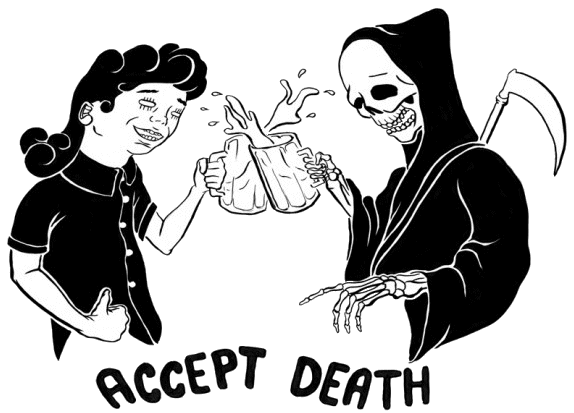 Indeed,
typical of Deathist sentiment is a certain
Zen
admiration for graceful death of animals, how loving
pets make their goodbyes and become consumed with the work of dying. For
other animals than the human species, are unselfconscious and without time
binding consideration of past and future
scenario
planning as
characteristic of the human ego. Nevertheless, innocence is once again
vastly overrated. For in truth a dying animal, to begin with feeling
increasingly run down just physically, all the more therefore simply becomes
understandably depressed with their impending fate, that they do, it would
seem, at all experience any intimation of what lies in store. And what
really shows how sensible animals can be, is that should the animal instead
recover, then there is no sign of any yearning for
death in a frisky pet
very much relieved to survive their ordeal! And that is what should be our
lesson in context. Animals do not seek for
meaning
where this no particular
meaning,
and therefore never mistake clinical depression for the
Indeed,
typical of Deathist sentiment is a certain
Zen
admiration for graceful death of animals, how loving
pets make their goodbyes and become consumed with the work of dying. For
other animals than the human species, are unselfconscious and without time
binding consideration of past and future
scenario
planning as
characteristic of the human ego. Nevertheless, innocence is once again
vastly overrated. For in truth a dying animal, to begin with feeling
increasingly run down just physically, all the more therefore simply becomes
understandably depressed with their impending fate, that they do, it would
seem, at all experience any intimation of what lies in store. And what
really shows how sensible animals can be, is that should the animal instead
recover, then there is no sign of any yearning for
death in a frisky pet
very much relieved to survive their ordeal! And that is what should be our
lesson in context. Animals do not seek for
meaning
where this no particular
meaning,
and therefore never mistake clinical depression for the
Existential
variety. Indeed, what
other animal than human beings ever hesitates to draw breath so long as they
remain adequately healthy? Given the fait accompli, finally we won't,
actually.
Medicine may soon be capable of
selective removal or suppression of memories, on demand. Amnesia, if it
could only be had, would spare one from the pain of loss, but memories may
be all one has left of any past happiness, And
death, the end of
consciousness,
is bereft even of thought at all. Any wish for
death, immediate or eventual,
or perhaps instead merely if not for amnesia, then sublime
apathy, is sheer escapism, the yearning to end suffering which is
natural. But the most radical pain management strategy of whatever mode of
annihilation cannot be the preferred solution, despite the manifest
efficiency and availability as ever the craven cynics are so quick to point
out. Suicide and death, like
rape and
violence,
are grand
dramatic
themes
romanticized in fantasy spoiled by excessive realism.
Deathism simply
panders to
the yearning for escape, generally a fantasy more safely and productively
processed Psychodynamically than ever taken lightly and blithely enacted,
even passively howsoever by simply allowing nature run its course into
terminal aging.
In truth, what is attendant upon the
appropriateness of grief, suffering that persists with whatever the injurious cause thereof, therefore
valued
as useful, even howsoever aversive, as often highly beneficial and
meaningful
motivation,
is the impulse of expression, a desire no less that such relief cannot
actually be called pleasurable.
That and the yearning for understanding. There is no self salvation, no
dignified exit. Barring intolerable suffering with no hope to give any
reasonable point in delaying the inevitable, suicide only comes from
dispirited self pity filling that void of yearned for understanding. And
even the latter case of the worst suffering, may nevertheless actually be
the more
motivated by the sense of isolation because no one seems to comprehend
their extreme plight, than by the relief from any other adversity. Actually,
death may often be a release more for onlookers who actually can't be
bothered, those malignant "Angels of Death." For in the words of Simone
Weil: “Attention is the rarest and purest form of generosity.”
-
- Excerpted from: 'A Death-Bed' By Rudyard
Kipling
Some die quietly. Some abound
In loud self-pity.
Others
spread
Bad morale through the cots around . . .
This is a type that is better dead.
Here are the needles. See that he
dies
While the effects of the drug endure
. . .
What is the question he asks with his eyes?—
Yes, All-Highest, to God, be sure.
When a dying person ceases to display
agitation, this may be interpreted as the dawning of inner peace as Earthly
cares begin to fade away, at the very least: comfortably numb. Or we can be
humane and
honest
in heartbreaking compassion. For such as they have
descended into an abyss of despair. Perhaps much as with lost
innocence, likely resignation too is simply over rated, especially by those
"Angels of Death," those who
encourage discouragement as the end looms near in the
self serving conditionality for of their dubious comfort to the most
desperate. There remains that most dire of
loneliness in tribulation
that no one else seems to relate to. And it should give
pause to consider anything worse that the end of life.
How then the monumental and stubborn insensitivity to
conflate quiet defeat with
peace and and acceptance so cherished over
honest desperation and
despair? Such are those
"Angels of Death,"
friends, such as they
are, family and
care professionals alike, in truth
motivated
more by their own comfort, those "Angels of Death" ever present for throwing
anvils to the drowning, that they may clutch for cold comfort on the way
down, lacking even straws of hope to grasp at.
Cryonics is compassion and resolve in the face of
mortal terror, Gentle reader, do you understand? Can you
fathom the evil and tragedy of bigoted passive hostility
in roadblocking of Cryonics? Is it such a mercy to
denounce as false hope and then sabotage those
proverbial straws that the metaphorically drowning
figuratively grasp? -Just
acting out
without first thoughtful due
diligence? For indeed drowning men are said to grasp at
straws, straws that with foresight may woven into raft
even for many a dauntless mariner who have braved that
angry dark sea of annihilation. And is not such a raft
Cryonics? Just don't put off preparation for too long.
Because I love you.
out
without first thoughtful due
diligence? For indeed drowning men are said to grasp at
straws, straws that with foresight may woven into raft
even for many a dauntless mariner who have braved that
angry dark sea of annihilation. And is not such a raft
Cryonics? Just don't put off preparation for too long.
Because I love you.
Graceful striving!
“The
individual ought to endure - for a life rightly lived is never rightly
ended.” — R.M. Perry, Ph.D.
W
hat would
Camus say about
Emortalism and Cryonics?
What would he possibly make of it all?
Camus recommends that it is better and nobler to remain
unreconciled with death and what
he calls the Absurd. But beyond
the attitude in ones own
consciousness,
Camus could take no
action
beyond
doomed
defiance in the face of
Absurd
mortality. And in the words of Benjamin
Disraeli: “Action may not always
bring happiness, but there is no happiness without
action.”
Although Kierkegaard contends that true faith demands that it is
precisely when it makes no difference what one does, one way or
another, that one must therefore take
action! After all, as the
saying goes, the best causes are all hopeless lost causes. And
Cryonics offers the ultimate heroic measure
in the striving to save lives, the last resort beyond all other last resort,
the ultimate long shot, the proverbial hail Mary pass, the veritable prayer if not to Jude, patron
saint of the impossible, then instead, whatever hopeful investment in sheer
possibility of engineering feasibility. Some argue that first further
advances in cryopreservation technology are required. Indeed, the same may
be said of cancer medicine, though no one would dare such murderously
contemptuous dismissal, because, obviously, so many have found themselves
without the luxury of time to wait for the medical technology to improve. Therefore we must be ready to make best
use of tools currently available. Even the most significant differences
between chemotherapy and Cryonic Suspension are moot as regards this single
fundamental parallel. Of course, the success of any round of chemotherapy in
staving off impending death from cancer, can be seen soon enough thereafter.
Whereas, the success of Cryonics, being the hoped for delayed resuscitation
out from Cryonic Suspension into healthy reanimation and cure, will remain
on hold indefinitely. -That's rather the point: Buying time for the
requisite technological progress. For what is more precious than time, and
what is more powerful than progress? Only life (the process of
consciousness)
and hope! Both chemo/radiation therapy and Cryonics are heroic measures and
remain uncertain. And so, the
criticism
against Cryonics because the results can only come in the future, is
actually nothing more or less than an aversion to deferred gratification in
very principle! How immature and petulant. But then, such is often the
natural effect of the mortality and the abiding terror of
death: regression
into childhood, vulnerable to heteronomy.
Again, in the alternative, Camus recommends that it is better and nobler to remain
unreconciled with death. Say, what?
Dead, am I? Cryonics is just a
way of seeking second opinion from better qualified more advanced medicine
of the future, even as to the diagnosis of
death!
Epistemologically
and
Methodologicall
y,
delusional
heteronomy
rejects all
real and uncertain hope, demanding instead, impossible guarantee
such as in religion and surrender to mortality, or failing that, despairs
into Nihilism, and even then therefore still
typically strives to quell doubt viewed as weakness, often by sheer
commitment as measured by all manner of personal investment and
self sacrifice, whereas
autonomy striving in uncertainty,
nevertheless to solve problems and improve life, instead embraces
fallibility and seeks to dispel doubt by investigation and experiment. Thus
Heteronomy is notoriously reluctant to
relinquish any position no matter how bleak, until manifestly untenable, and
even then, only surreptitiously. Any prejudice such as Racism or Sexism
never stands out but actually fades from notice within the bigoted
milieu
or setting, and it is much the
same with Deathism here and now. Perhaps out of sheer
decidophobia, more common milder degrees of
Deathism
are purposefully designed so as to allow gradual and surreptitious
progress, but without surrender of all manner of investment in complacency
of status quo, instead to the investment and opportunity, of hope and desire
implicit to open embarkation upon the anxiety provoking experimental
fallible uncertainty of anything as yet seemingly so distant in abstraction
as of practical immortality.
Hence even the
taboos against
Cryonics and Radical Life Extension may be
regarded as only a special application of the much broader
taboo
upon
relevance itself and even upon hope at all, so
blithely dismissed as
pipedream for
wont of prior authoritative foundation or justification. But it is precisely
the rational capacity for abstract reasoning along with every beneficial
accomplishment therefrom, that differentiates the human condition, and
embrace whereof that defines Humanism.
Will the future be a good place? Seriously? Better than
what,
death? Who would refuse to bail out from a sinking ship,
even if the only lifeboat where a leaky time machine into the future?
But the future unfolding from the advent of Radical Life Extension, is
simply the same ever changing world we already live in, minus aging. And
the future with the technology to restore frozen and pickled people to
life, will be nothing short of amazing! We can, therefore, be optimistic
or at least curious. Progress means that human needs will be better met,
and all manner of privation of our time will become virtually
unfathomable. But more than this, exploration of the universe and direct
technological impact upon the very human condition, has only begun. How
can people already be so timid and blasé? What has become of our
pioneering Hedonism?
Raising awareness and changing thinking seems so crucial
to quicker much needed progress because, thus far, none of the hoopla
even of the most momentous scientific breakthrough ever quite seems to
reach the front page. Indeed, even bearing in mind astounding
recent developments in the
partial reversal of aging achieved in mice not to mention
exciting promise in
mitochondrial antioxidant
development, it bears mention at this juncture, how, simply because
of the multidimensional complexity of the problem of aging, rather than
exploding onto the
scene
dramatically,
it remains just as likely that new treatment and even cure first for the
various aspects of declining health with age and only thereafter the
first glimmer of Radical Life Extension, may more gradually manifest in
the public eye via what will only be perceived and accepted as the
steady advancement of Geriatrics. The questions are begged: Suppose,
say, that you discovered that you would eventually hibernate instead of
dying naturally, would you commit suicide simply in order to prevent
future revival into full health ad vigor? If you had eternal youth,
would you actually take poison simply in order to begin aging? Would you
do it like Andrew Martin in Isaac Asimov's 'Bicentennial Man', out of
sheer desperation for recognition? Many sacrifice their lives, and take
others down with them, only to win the admiration of their peers.
Seriously: Exactly what dire readjustment in the world of tomorrow, will
be so much worse than any of our contemporary vexations? How is oblivion
truly preferable? By and large, Ludites exhibit the poorest appreciation
or sense of history. Therefore, in the end, far from histrionic future
shock, those now in most Ludite phobic
denial
of so momentous impending change in the very human condition, will have
become the most jaded and blasé, forgetful of the past, blithely inured
to change, and never come even remotely to appreciate neither our good
fortune nor the ramifications thereof.
heteronymous fear of upsetting the social
order will yield, and the public will accept practical immortality and
even cryonics, when they feel that the social order has absorbed and
neutralized the novelty. "More than one hundred years
ago, the American philosopher William James dubbed the
knowledge
that we must
die “the worm at
the core” of the human condition"
motivating such pervasive
denial simply in order to
cope, according to
terror management theory. Indeed, Roen Horn expounds upon the vivid parallels between Deathism
& Stockholm syndrome. But in many cases, even
Stockholm syndrome begins to abate once captivity ends.
So, who wants to cheat
death
and live forever? Everyone,
really!
Mokokoma Mokhonoana complains: “You need to be greedy
or ignorant to truly want to live forever.” Were that truly the
case, then one might still recommend greed over ignorance. Indeed, again
to quote Mokokoma Mokhonoana:
“Even those who want to go to heaven would
rather kill than be killed.”
-
“If we had an immortality
pill, the demand for it would be instant and overwhelming and I’ve
noticed that in myself, with all my
ambivalence,
when I read a newspaper story or exciting journal article in this
field and suddenly that goal seems plausible, I can tell the world
would look very different to me and to everyone if you could go to
drug store and buy those pills tomorrow. I really don’t think we
would hold back, or governments could hold us back.
—
Jonathan Weiner
 interview
interview
“Human tool-makers always
make tools that will help us get what we want, and what we want
hasn't changed for thousands of years because as far as we can tell
the human template hasn't changed either. We still want the purse
that will always be filled with gold, and the Fountain of Youth. We
want the table that will cover itself with delicious food whenever
we say the word, and that will be cleaned up afterwards by invisible
servants. We want the Seven-League Boots so we can travel very
quickly, and the Hat of Darkness so we can snoop on other people
without being seen. We want the weapon that will never miss, and the
castle that will keep us safe. We want excitement and adventure; we
want routine and security. We want to have a large number of
sexually
attractive partners, and we also want those we love to love us in
return, and be utterly faithful to us. We want cute, smart children
who will treat us with the respect
we deserve. We want to be surrounded by music, and by ravishing
scents and attractive visual objects. We don't want to be too hot or
too cold. We want to dance. We want to speak with the animals. We
want to be envied.
We want to be immortal.
We want to be gods.
But in addition, we want
wisdom and justice. We want hope. We want to be good.”
—
Margaret Atwood, ‘In Other Worlds:
SF
and the Human Imagination’
And the
proposed strategy of optional universal coverage for Cryonic
Neurosuspension (or perhaps neuroplasination?)
under
Integrated Recovery,
recommends the wisdom of
best facilitating hope of
personal practical immortality by the greatest good for others as
served by cadaverous donation.

Deathism:
The passive suicide
pact of the Bio-Luddites
Because
death is so
good for you! So good we gotta share!
-
- “To die, and to be
dead, that must be glorious!” —
Count Dracula
This
entire addendum on Deathism only strives in further attempt first of all to
fathom, then to rebut,
the prevalent and frankly mystifyingly misanthropic unserious decoy
objections to Cryonics and Radical Life Extension and in preservation
instead of status quo mortality under what solace may accrue from deepest despair masquerading as hope
itself.
-
Kindness to
animals and the prospect of meat without animal suffering?
- A low
tech
piecemeal engineering solution? Brief digression into another
innovative
new business model:
|
There is a
relationship between farmers and
their animals, even ending as it
may, at the dinner table. Temple Grandon famously declares than
animals make us human. How so? By bonding under our
nurture, or by dying at our hand? Or is the secret thrill in
the combination thereof, and in the anticipatory Masochism
of going the way of all flesh ourselves? Can it be that
humane sensibility is precisely what Deathism, indeed:
death worship, truly so abhors? Has
the
Nihilistic
the ancient thrilling shame and dark
catharsis of animal sacrifice simply gone underground both
into the meat industry and into the collective unconscious?
The very thought can only elicit redeeming
Existential
disgust.
Or then again, maybe it really is
the meat that is truly so delicious!
In any case,
what must be done to resolve the
ambivalence?
Vegetarianism is
not sweeping the world. Vegetarianism only washes the
vegetarians' own hands of guilt.
Existential
good faith
demands due acknowledgment of the
Absurdity
of how Vegetarianism doesn't really help the livestock very
much. Nor has there been any need of waiting upon pending advancements in vitro
meat tissue culture or:
shmeat*,
because,
fortunately, there is already an entirely feasible much
safer and simpler immediate
piecemeal engineering solution,
than mass conversion to vegetarianism pending
shmeat*,
just staring us in the face: So, why wait? Given that
because of the needs of mass production, livestock in
battery farms must suffer such miserable penned up
immobility awaiting their fate, then why not bring modern
ranching to its logical
conclusion? Why shouldn't livestock from hence forth be
caused, by invention to stunt the development of higher
brain centers, to be born into a permanent vegetative
state, braindead? It's only the decent thing to do.
-
After all:
Whereas once farm animals
had any responsibility at
all in looking after
themselves, and any sort of
a life to live,
notwithstanding it's end,
even so there is
nothing that confined and immobilized penned up food animals
in battery farms need to do anymore for themselves. All that
animal
consciousness provides for any longer in mass
production animal husbandry for meat and eggs, let alone
any proposed more exotic medical applications requiring
genetically engineered livestock, is only needless
suffering and agony all around.
Moreover, by redeeming
battery farming into its
logical
conclusion, feed, maintenance,
sanitation and therefore endangered public health, will all
be vastly simplified at considerable savings, and butchery
will become innocuous, a boon to the currently beleaguered
conditions of mental health for labor in the slaughter
house. Then the only farm animal
consciousness
will be
that of
placid and tended to dairy livestock along with the pampered
denizens of petting zoos. Wouldn't that be nice?
-
-
In human
society, animals cannot be equal.
Not even the most adorably docile
and beloved local animal
celebrities,
knowing their way around, and
welcome to roam about freely. Even
the most savage wild animals can be
friendly,
and are
known
to gravitate to human civilization
in order to become comfortable
pampered pets. Because living in the
wild is dangerous and terrifying. In
rural areas, dogs and cats are
forever bringing home new friends!
And a
capybara
has even been seen beguiling an
alligator. And yet, animals will
never understand voting. Not until
we upgrade their intelligence and
turn them into people! Domestic
animals can either find themselves
cared for as pampered pets, or
brutally exploited as livestock. And
as we have seen, the divide is only
increasing. The animal contract for
animals bred for meat, is only
becoming ever more one sided. But
this horror at long last can end
with the mass implementation of
existing technology to grow meat in
vats without animal cruelty at all.
And in
the interim, there can be
implementation of the present
suggestion.
-
-
Not to
digress, but much likewise, for us,
for homo domesticus, the
domesticated human being. The
constructed social reality of
working for a living, becomes ever
more
alien,
ludicrous and
irrelevant.
For most, it's all busy work, and we
all
know
it! Few
actually still chop their own wood,
carry their own water, and grow
their own food. Or would ever even
want to! Because of man's inhumanity
to man, many human beings experience
the terrifying exploitation of
livestock. But others attain the
comfort of pampered pets. Higher
human needs of social and
intellectual
stimulus struggle
only follow thereafter. Animals can
also get
bored,
but are more easily entertained. But
no human being still fighting just
to stay alive, will actually be
reading any of this! And yet the
mercy we find for other animals, we
human beings may yet finally lavish
also upon one another and ourselves.
|
|
--footnotes --
Food of the Future: Fish Flesh Grown
without the Fish
 From: From:
Artificial Rabbit Penises,
In Vitro Meat, and
Other Breakthroughs
in
Tissue Engineering
In Vitro Meat
– Money may never grow on trees, but meat can grow
in labs nowadays. Scientists already
have the capability to grow synthetic meat tissue or in
vitro meat (IVM) from animal cells, but the cost is
currently too prohibitive for it to be used widely. Plus
there is the problem that
many recoil from the idea of eating lab-grown meat. But
as the cost comes down and as public awareness of the food
industry's practices grows, aversion to IVM might also
diminish. From better safeguarding
the environment,
healthier and tastier food, and acceding to the
moral antipathy towards
killing animals for their meat, this technology has
the potential to revolutionize the way we live.
Large
human and livestock populations in close concentration and
proximity, allow new viruses to jump species and sweep
across the world every year; an ongoing public health menace
that will be fortuitously eradicated by transition to shmeat.
|
---But still
nowhere as far off the mark,
chronologically,
than Winston Churchill, no
less!
"With a greater
knowledge of what are
called hormones, i.e.
the chemical messengers
in our blood, it will be
possible to control
growth. We shall escape
the absurdity of growing
a whole chicken in order
to eat the breast or
wing, by growing these
parts separately under a
suitable medium."
—
Winston Churchill, 'Fifty
Years Hence.'
Strand
Magazine, December 1931
[commentary]
|
|
| |
|
|
Point being how we really feel,
deep down, and how in human affairs, we can generally do better and
happier, quite simply, without
death. And this is
Empirical
observation, not
futurological forecast.
Death is not necessary, nor is
death
in any way our
friend, even in vanquishing our foes
or feeding us through the much benighted cycle of life.
Of course, even to say this takes liberty with
expressive figures of anthropomorphism and
Pathetic Fallacy,
because only people can truly be held to account for conditionality. To
wit, leave us face the truth that despite our higher intelligence and
awareness, we have domesticated ourselves no less than our animals.
And well may we ask: Where does that
leave us? Answer: With the responsibility for deciding our own civilized
condition, troubled conscience and mercy to ourselves no less than for
the domestic animal life in our charge.
Should any doubt endure the already
vivid historical lessons as of the Holocaust, and as further attested by
fearful urban mythology that organ donors will be denied full treatment,
in order to kill them in order to harvest their scarce organs, allegorical
trope
of lambs (or sanctimonious tribal rabbits, or docile English organ donor
clones cuing up like good little Brits!) to the slaughter all drive home
the point that blithely meek resignation in the face of
death is a
disturbing ideology, and rightly so.
Indeed, perhaps the most pervasive, frightful and
strident of Masochistic
Moralistic
taboo
remains Deathism, the acquiescent resignation
and even outright glorification of
death as not so bad or even
wonderfully good, indeed even as some sort of
selfless
moral
imperative.
And Deathism actually finds the sheer
knee-jerk temerity to denounce
Cryonics as morbid!
- “The nature of a novel is that it has no opinions, only
the
dialectic
of contrary views, some of which, all of which, may
be untenable and even silly.”
-
-
—
Anthony Burgess
- WAR IS PEACE, FREEDOM IS SLAVERY, IGNORANCE IS STRENGTH - and leave
us not forget:
Death is glorious Life Eternal! T
he first rule of
propaganda
pandering, is that anything can
most readily be either glamorized or vilified, formulaically, so that in the
slippery slide from willing suspension of disbelief into the tenacity of
utter credulity, vivid illustration takes on the very semblance of airtight
convincing demonstration. After all, seeing is believing, as the old
platitude goes, but ultimately, it is the mind and not the eye that sees.
Never mind what history really teaches us. In the vivid
pandering
of unfettered
propaganda
fantasy that pretends all manner of daring and provocative perspective,
slaves can be happy, totalitarianism efficient and humane, and even wild
sex a real drag, until the
protagonist finds
God! Even life and survival can be
made wearisome and disgusting, heightened and ecstatic only by the thrill of
self destruction, so that death itself may be extolled as transcendent and
beatific release from all cares and woe, indeed in ultimate crowning
fulfillment of the
Zen Mystic's
quest for
futility,
committed sacrifice
making way for return to innocence in generations to come.
And thus is the greatest compassionate nobility of comforting the dying
is indeed all too often monstrously perverted by any trace or
subtext
of conditionality. For reciprocally stalling and peer pressuring one anther
unto death is indeed monstrous and abominable. "More than one hundred years
ago, the American philosopher William James dubbed the
knowledge
that we must die “the worm at
the core” of the human condition" motivating such
pervasive denial simply in order to cope. Indeed, Roen Horn expounds upon
the vivid parallels between Deathism
& Stockholm syndrome.
Behold the the cruelty and depraved indifference of all such cult like\
exhortation to
willful positivity,
often demanding the embrace of all
sore
travail,
destitution, misfortune, illness, injury, yes even dying and
death, all
extolled as a journey and a blessing! How cruel and
lonely, how
bereft of all animal compassion, to deny those who suffer, even dying cancer
patients, their fear and anguish, and all in such pigheaded
heteronomy to relentlessly
willful positivity!
Indeed, are worst amongst Deathists, those casual
"Angels of Death,"
clinicians,
friends and family, soothing and comforting the terminal slowly
crumbling in their despair to go quietly and comfortably without agitation,
or just those exasperated doctors and bureaucrats, eager to be rid of the
most aggravating and vulnerable of the psychiatrically impaired among the
dying, abusing such patient's desperate
trust
by pressing them to relinquish even such simple maintenance as intravenous
hydration? After all,
Nihilistic resignation and
sublime apathy are so widely exhorted as they key to life in the first
place! Yes, great is the power over the human psyche of myth for good or
ill, to revolutionize or to canonize social attitudes, to inspire tenacious
hope, true or false, either towards
action and inspiration or else into
taboo and status quo inertia.
Sour grapes
excuses for death may be deemed understandable given the formerly
intractable human condition of inevitable mortality from time immemorial,
but now circumstances are finally changing. If the aphorism is true, and
freedom is just another word for nothing left to lose, then why,
nevertheless, such paralysis obsessing for wont of impossible guarantees? Of
necessity, we experiment with life and death continually. Why not make every
best effort openly and responsibly? Why are experimental drugs, no matter
how highly effective but still pending approval, withheld even from the
imminently terminal? Precisely what are we all being protected from by the
medical regulators?
Once doctors in America where often arrogant, rampant and unaccountable,
even to their professional peers closing ranks in mutual protection. But now
we have the opposite problem. Only the most courageous dare stick out their
necks at all. Opposing camps of doctors subvert authority in order to
persecute one another, instead of conducting scientific experiment and
controversy.
Doctors live in terror of the own tyrannical examiners boards, however
qualified medically, often arrogant, rampant and unaccountable, if not
actually intimidating bullies prone to abuse of power, then at best
nonetheless so clearly untrained, unconcerned and unfit for what is a
judicial process and sensitive responsibility. There remain however two
exceptions, two kinds of doctors unbowed nevertheless: For the outright
career criminals in medicine are in the end answerable only to the police
and the courts, while at all short thereof, the worst malpractitioners are
typically too burnt out to notice or care about the regulators who, after
all, tend to ignore rather than to redeem or to punish the true burnt out
malpractitioners. All in all, the practice of medicine has become such an
HMO cookie cutter operation. Doctors may deem themselves exceptional for
keeping abreast of approved therapies, but never research or discovery,
actually happy to be kept in the dark, because their number one priority is
to avoid
controversy.
Hence, with routine and livelihood and careers to protect and families to
feed, their foremost responsibility is to remain
heteronymous and
perpetually irresponsible. In any better spirit of
autonomy appropriate for
dealing with institutions that are both indispensible and dysfunctional,
they should be far more activist and democratic, taking part in their own
community of peers, organizing and agitating for improvement within medicine
in behalf of their patients, instead of abandoning us, simply leaving us
to our own devices. But who has time?
As a generality, no doubt that the time and expense of lengthy and
convoluted safety approval process stifles competition and
innovation
even in the very domain of safety itself! But what about protection of the
vulnerable public? Those haughty Radical Libertarian Social Darwinists who
decry all nanny state intervention, advocating instead, complete freedom for
natural selection so that fools may eliminate themselves, seldom imagine how
they themselves often resemble that very remark! Instead, to be realistic,
one among many more nuanced problems is how the
Food and Drug
Administration and equivalent regulators around the world,
follow a mandate of approving therapies for safety in their own right. But
that alone is actually irresponsible, taking part in the myth of inherency.
Safety in do more inherent than any other aspect of circumstance, but
contexted in any larger
situation. Indeed,
it may well be that the authorities are accomplishing as much harm as help,
by doing exactly as they are supposed to. Scientific results, conclusions
from experiment and research, may ever be deemed conclusive, however one
sets the bar. And yet it remains that nothing can ever be truly certain. But
what remains even the more complicated and salient, is how responsible
decisions can follow only from weighing whatever preponderance of known
evidence in the assay of projected cost and risk versus benefit at any given
moment in time. The risks and benefits of providing any treatment option
under any range of foreseeable circumstances, must weighed against those of
howsoever withholding it, and also compared to those of whatever other
available options. Moreover, the time needed for testing and whatever
approval process, must be estimated, with the cost and dangers of such
possible and likely delay estimated and considered. But none of this is even
pondered, at least not routinely and systematically.
The malaise that is
Deathism
-
- “Immortality - a fate worse than
death.” — Edgar A Shoaff
- Indeed, why does anyone prefer
mystical
or stoical striving towards
quiescent
acceptance of status quo to
arousal
and hope in Humanist progress
and change for the better by overcoming adversity? Answer: Because
heteronomy to the former
introverited strategy in striving more directly assuage unpleasant emotion,
is therefore so evangelically extolled and proselytized as more reliable,
being, at least theoretically, entirely within individual power and also
garners societal approval. Denial, emotional survival instinct, often
overwhelms true relevantly extroverted survival instinct. When desire and
value
are kept dormant by
denial
mechanisms of sheer willful failure of
imagination, no yearning beyond status quo is allowed to awaken, merely put
out of mind. Deathism is suicidal escapism from the dread of futile and
meaningless
lives.
-
Sheeple
reconciled with death are dignified and comforted by
knowing ones
place, as if such where ever changeless. For the embrace of progress is not
hubris but the appropriate humility to inevitable fallibility, and
realization, with due respect
and apology to Ben Franklin, that not even
death and taxes can remain certain forever, because, as Heraclitus realized,
chance is the only true constant. Suicide and
death, like rape and
violence,
are grand
dramatic
themes
romanticized in fantasy spoiled by excessive
realism. Deathism simply panders to the yearning for escape, generally a
fantasy more safely and productively processed Psychodynamically than ever
taken lightly and blithely enacted, even passively howsoever by simply
allowing nature run its course into terminal aging.
- Relative and sufficient peace with ourselves is perhaps braver even that
the Transhunanist aspiration to god-like social and technological evolution.
And hope in fallible progress is the greater challenge to faith, than all
precisely such reconciliation and resignation as so often rationalized by
clumsy abstraction to the effect of implicit limitation by duration, even
upon the very value or motivating desire for survival. Such a gloomy outlook
is even less prudent than the historic and persistent lack of foresight into
the explosive demand for computing and telecommunications that was imminent.
-fresh new demand for hither to unimagined novelty.
The psychopathology of Deathism
- Suicide and death, like
rape and
violence,
are grand
dramatic
themes
romanticized in fantasy spoiled by excessive realism. And the passive self
aggression, of simply allowing nature and aging to run their course, may
appeal to decidophobia. Deathism simply panders to the yearning for escape,
generally a fantasy more safely and productively processed Psychodynamically
than ever taken lightly and blithely enacted, even passively howsoever by
simply allowing nature run its course into terminal aging. Deathism assumes
that boredom
and ennui, that are a part of life, are cumulative over time,
whereas, rather it is novelty and progress that accumulates over longer
stretches of time, ever more profoundly. The
anti-intellectualism of the
Zen
condemns the loss of innocence as
characterized
by the very capacity for subjective
inner refection. Perhaps the true downside more specifically, is the
capacity for melancholia and suicidal brooding, or worst and even more
specifically, any such as the misguided succor of assisted suicide for
extreme depression
in the Netherland. In In the struggle against whatever
deepest grief, let alone mere boredom, surely the embrace of
death should
come only as very last resort, not determined routine fallback!
- Deathism remains the sentimental morbid glorification of
death, disguising the deepest of cynical Nihilism, as
in the cold malevolence of Joseph Stalin:
“Death solves all
problems, No man no problems.”
Yet for whatever
desperate solace of whatever fantasies or rationalizations, explicitly
religious or otherwise, is no longer even arguably harmless. For Deathism is
to any dawning prospect of Radical Life Extension, much less to the ultimate
heroic measures that are Cryonics, what Christian Science is to all life
saving Medicine! More over, if death isn't so bad, what can be terribly
wrong about murder, especially as via Deathist
propaganda
pandering, by
manipulative
taboo, pressure and persuasion
alone? On the contrary, such is the appropriateness of grief to the harm of
death and loss, that we are compelled to remember the
dead because we need
to. As Mark Twain: observed, funerals are for the living. Only the bereaved
may seek for whatever solace. The only possibility at all of ever actually
helping the dead remains with Cryonics.
Perhaps in truth that oft praised dignified face in confronting
death, after
all, is a matter of courtesy to onlookers, so as not to alarm the other
sheeple! For in truth, is it
not actually themselves whom those Moloch worshiping "Angels of Death" so
struggle to comfort? How cruel is the demand for
willful positivity, to strip away from the suffering, even the validity
of their own grief instead even of sharing their sorrow and showing
understanding with compassion, ultimately not by consolation alone, but by
the life affirmation of taking any possible measure improve matters if at
all possible.
Do people want only to avoid
or blot out the emotion of sadness, or don't we
actually desire to prevent and to avoid or at least minimize actual
misfortune? Pain persists until cause is removed and injury healed. Negative
emotion, even howsoever aversive, is often highly beneficial and
meaningful
motivation. For even though nowadays many threats are psychological rather
than physical, the same primitive impulse to destroy the threat yet arises.
And the ability to quickly discern
friend from foe is essential to survival
because mistaking either can be deadly. Disgust
motivates the avoidance of
all that which is toxic and corruptive. Contempt distances one from the
unworthy. Suffering mobilizes escape from harm while pity thereof raises
alarm and succor. Fear of death is the good sign of life! And there can be
no happiness except in life, and no profit in simply giving up a-priori.
- The glorification of abject surrender is
characteristic
of Nihilistic corruption of the instinctual
will
to power and survival exactly as
bewailed by Nietzsche in
‘The
Antichrist’. “I
call an animal, a species, an individual corrupt, when it loses its
instincts, when it chooses, when it prefers, what is injurious to it. [...]
the
values
of decadence, of nihilism, now prevail under
the holiest names.”
-
- Deathism is the distillation faith, the purified residue of
Mysticism
and
religion, even without advancing any
Ontology, making any
assertions about
reality. As we have seen, a baffling range of other intellectualizations and
apologetics of
denial
can be employed instead. Does Deathism then envy the
hope and courage to defy death as manifest in Radical Life Extension
research and the practice of Cryonics? Or is it worse than that? It is said
that even despair must be livened by even so much as a glimmer of hope.
Perhaps what Deathism actually so abhors in such anathema, is the risk of
becoming inspired by the example of Radical Life Extension research and the
practice of Cryonics, and losing their own heteronymously
hard won solace.
Why then so disrespect their heartfelt convictions, and risk robbing anyone
of such a treasure? Obviously, to stop them from sharing it! To help stave
off such proselytizing and the infection of resignation. To save all of our
lives, if at all possible. For prevailing Deathism is defensive
denial,
malignant, weird and dangerous. Deathism is the psychological barrier to
long term survival and progress. Bah humbug then, and a long over due decent
burial, to Deathism! Because all such convoluted
denial
can only undermine
responsible
action towards survival, happiness and well being.
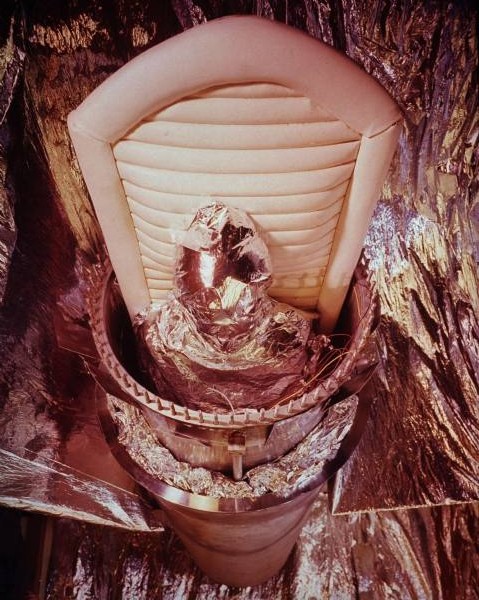
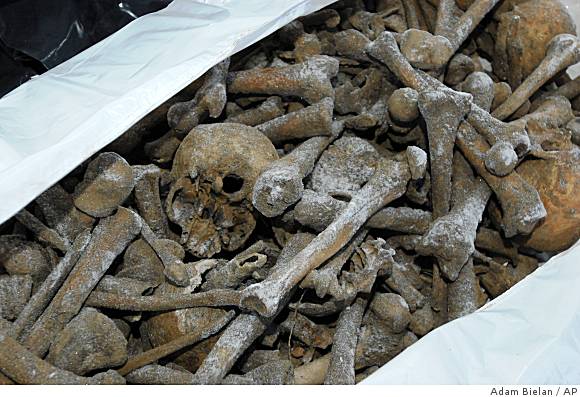





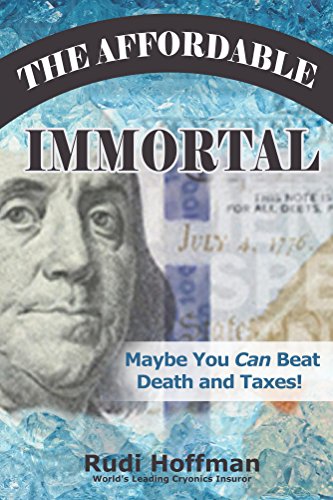 'The
Affordable Immortal: Maybe You Can Beat Death and Taxes!' by Rudi
Hoffman and Sean Donovan, is a book that everyone should have or at
least even
'The
Affordable Immortal: Maybe You Can Beat Death and Taxes!' by Rudi
Hoffman and Sean Donovan, is a book that everyone should have or at
least even 



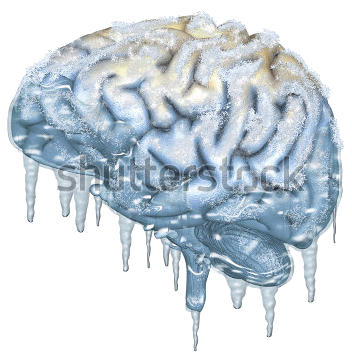

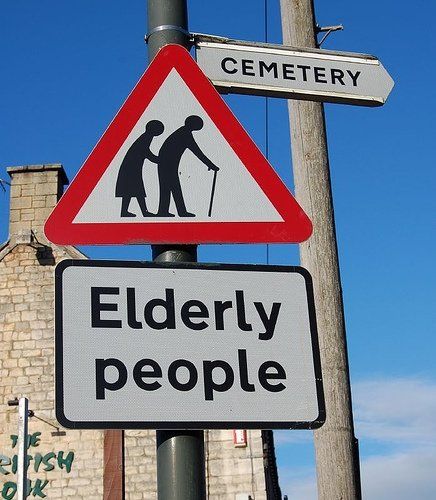
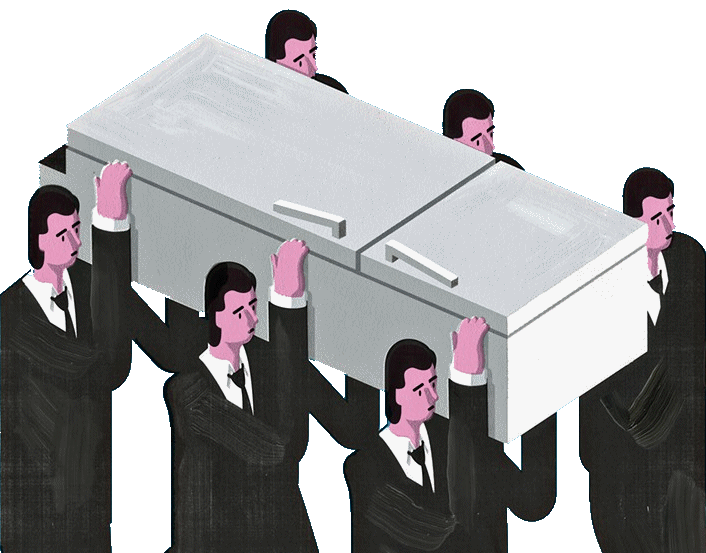

 The church holiday should be the Frozen Dead Guy
Days
formerly in in Nederland Colorado and now in Estes Park, Colorado nearby
The church holiday should be the Frozen Dead Guy
Days
formerly in in Nederland Colorado and now in Estes Park, Colorado nearby



 Although, technically, under law, no money may change hands for the organs and
samples themselves, there is a tremendous, some would say obscene, amount of
money and profit, tied up in all aspects of post mortem recovery, storage or:
banking and emergency transportation of bodies, organs, tissue, chemical
extraction, etc., from which added expenses of neurocryonization (or perhaps
neuroplasination?)
and interment would be easily affordable for the gain of each crucial additional
post mortem donation.
Although, technically, under law, no money may change hands for the organs and
samples themselves, there is a tremendous, some would say obscene, amount of
money and profit, tied up in all aspects of post mortem recovery, storage or:
banking and emergency transportation of bodies, organs, tissue, chemical
extraction, etc., from which added expenses of neurocryonization (or perhaps
neuroplasination?)
and interment would be easily affordable for the gain of each crucial additional
post mortem donation. 
 The secure broad acceptance of Cryonics remains a problem quite aside from
technology, a challenge of the creation of enduring social institutions, even in
the face of hostility. Solid corporate facilities are a major improvement in
stability from the dicey garage operations of yore, too often so fraught with
incompetence, fraud and scandal. But not nearly improved enough. There is
legitimate concern that Cryonics providers in the United Sates will simply face
bankruptcy when the Baby Boomers begin dying out. Whereas as far as
KrioRus in Russia, I
hardly need remind anyone how that organization operates at the margins of a
fairly unstable developing nation, with matters by no means improved by ongoing
international banking and monetary catastrophe.
The secure broad acceptance of Cryonics remains a problem quite aside from
technology, a challenge of the creation of enduring social institutions, even in
the face of hostility. Solid corporate facilities are a major improvement in
stability from the dicey garage operations of yore, too often so fraught with
incompetence, fraud and scandal. But not nearly improved enough. There is
legitimate concern that Cryonics providers in the United Sates will simply face
bankruptcy when the Baby Boomers begin dying out. Whereas as far as
KrioRus in Russia, I
hardly need remind anyone how that organization operates at the margins of a
fairly unstable developing nation, with matters by no means improved by ongoing
international banking and monetary catastrophe. 
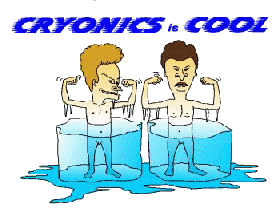 Less restricted developing Eastern European legal infrastructure along with
doctors and hospitals actually cooperative with Cryonics, affords flexibility
and promise in better meeting the unfolding needs of Cryonization. All operating
expenses, especially real estate or rent, are vastly reduced by the current
economic downturn whereby Latvia has been particularly hard hit. The climate
reduces year round cooling expenses of Cryonic Suspension. And while dry ice,
let alone permafrost burial, is considered vastly inadequate for purposes of
long-term Cryonic preservation, even permafrost as a natural fall back in case
of catastrophic failure, is still arguably better than no such contingency at
all, and certainly buying any extra time for whatever rescue or repair efforts
possible.
Less restricted developing Eastern European legal infrastructure along with
doctors and hospitals actually cooperative with Cryonics, affords flexibility
and promise in better meeting the unfolding needs of Cryonization. All operating
expenses, especially real estate or rent, are vastly reduced by the current
economic downturn whereby Latvia has been particularly hard hit. The climate
reduces year round cooling expenses of Cryonic Suspension. And while dry ice,
let alone permafrost burial, is considered vastly inadequate for purposes of
long-term Cryonic preservation, even permafrost as a natural fall back in case
of catastrophic failure, is still arguably better than no such contingency at
all, and certainly buying any extra time for whatever rescue or repair efforts
possible. 








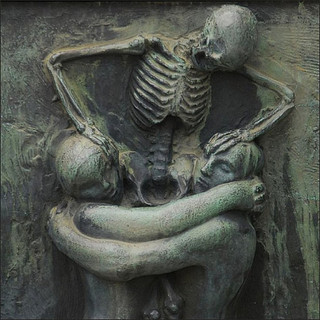

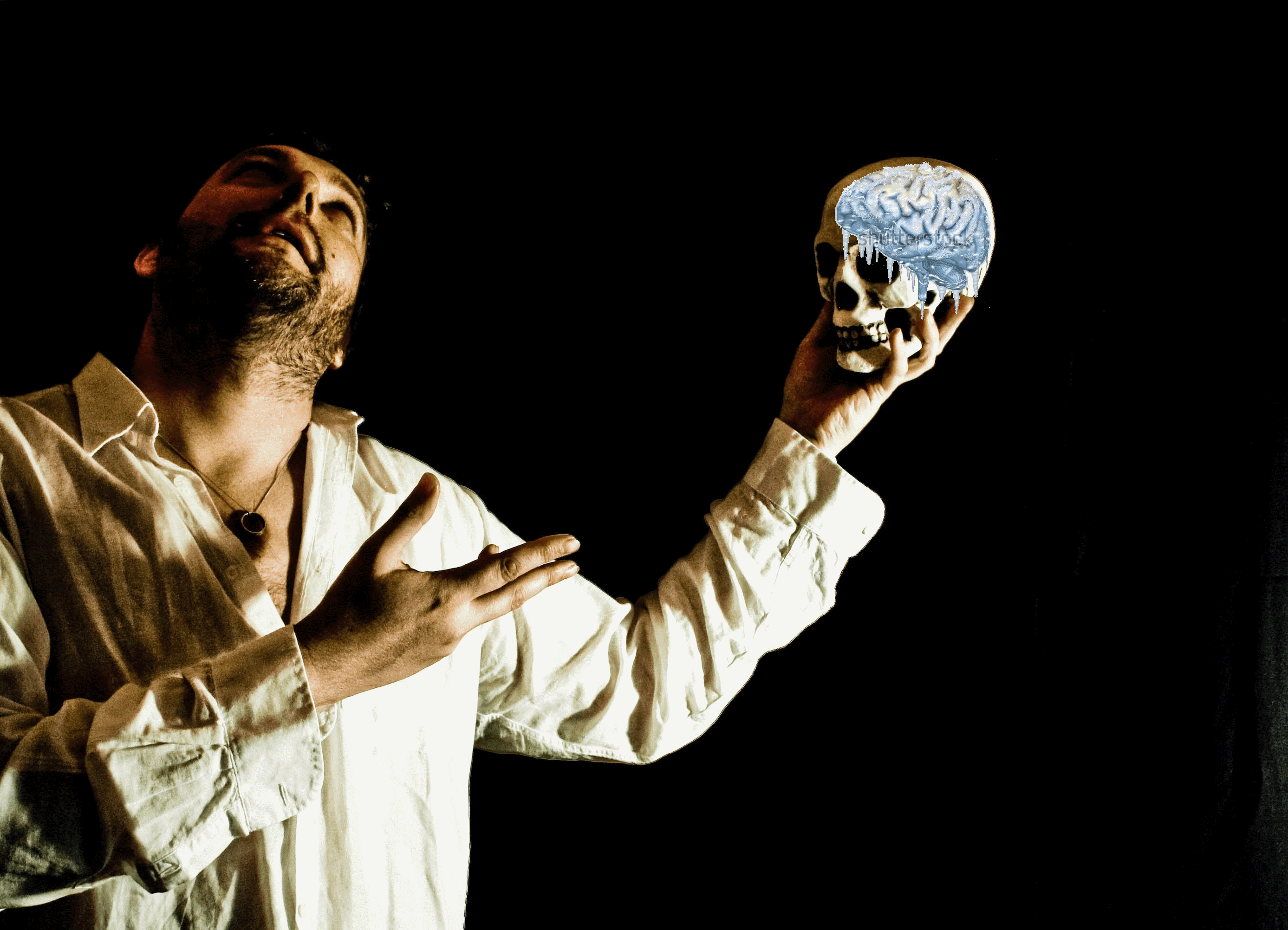


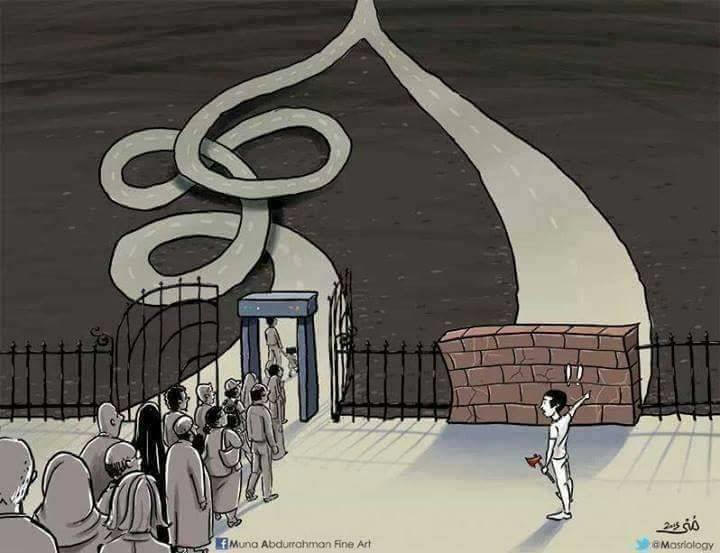


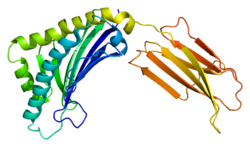






 From:
From:
